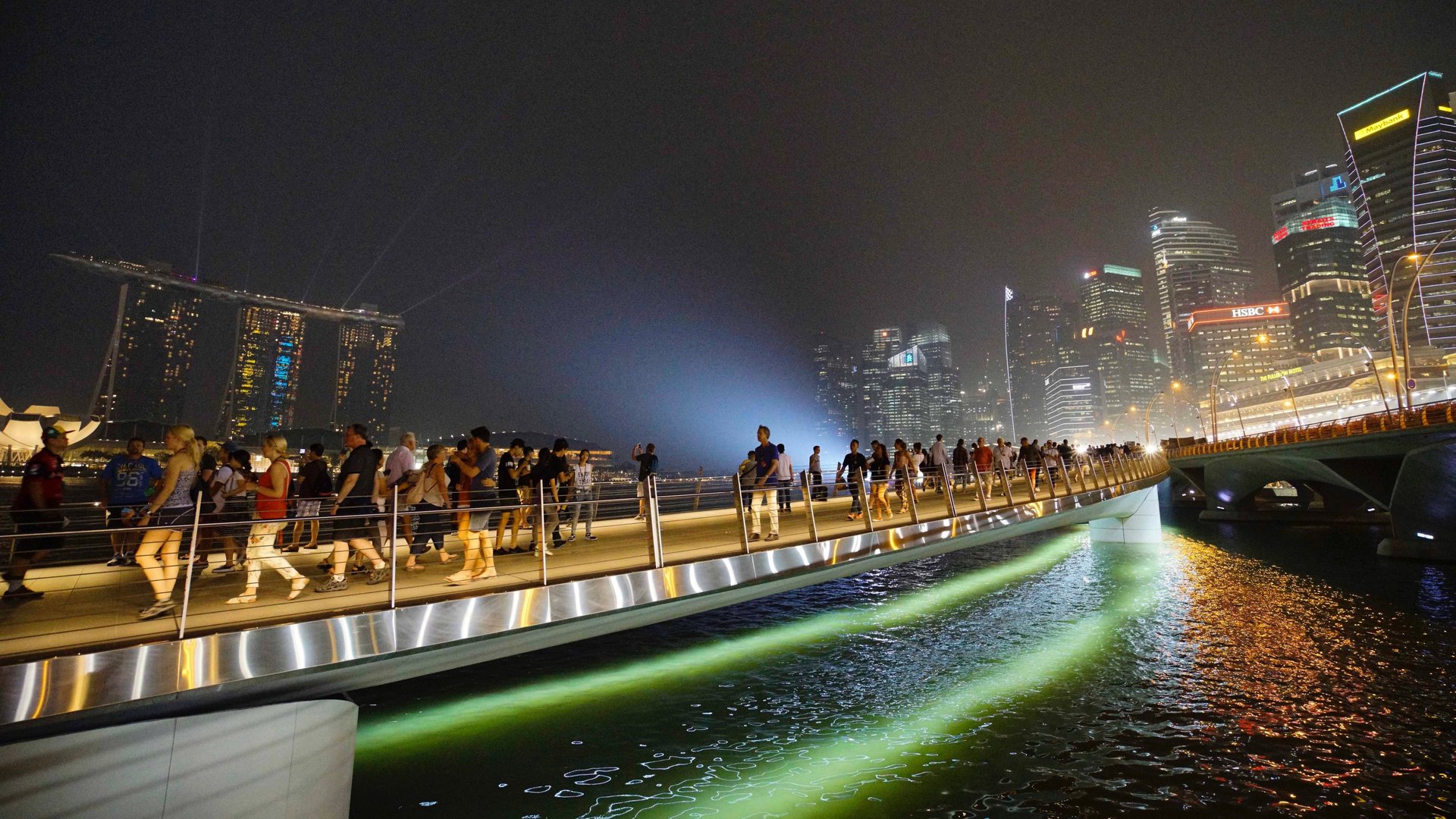Floating sea suburbs may solve crowding and sprawl in coastal cities
Imagine a massive raft tethered to a coastal city. On it, is an apartment building. And linked to that raft are more of the same, a chain of floating structures that serve as “suburbs.”


Imagine a massive raft tethered to a coastal city. On it, is an apartment building. And linked to that raft are more of the same, a chain of floating structures that serve as “suburbs.”
This is what engineers in crowded urban environments by the sea are dreaming up, as Hakai magazine reported on May 2. Two new studies explore the notion of these floating neighborhoods at different scales. At this point, engineers are just working through the ideas, not actually proposing to launch the process of building the unprecedented city extensions. Still, their work is notable for its ambition and creativity and because this could someday be a reality in places like Singapore and in Tel Aviv, Israel, where housing is expensive and crowding is an issue.
Research published in the journal Ocean Engineering in March, authored in part by engineers at the Singapore Department of Civil and Environmental Engineering, examines the possibility—and engineering challenges—of “modular multi-purpose floating structures,” or massive rafts that could be attached to each other.
For the purposes of the study, the engineers envisioned connecting a grid of seven floats, each with a 380 sq ft base (35 meters) and 40 ft (12 meters) tall, weighing about 16,500 pounds, or more than 7.5 metric tons. These floating structures would all be connected to an onshore quay in waters about 60 ft deep. The research focuses on connector design because this is one of three factors—along with the wave lengths and wave phases of the waters they float on—that will influence a sea suburbs’ stability and, if done properly, “significantly reduce extreme responses.”
The problem of “extreme responses” can’t be resolved by structural solutions alone. If these floating neighborhoods can’t be made to feel more stable than a boat, chances are good people won’t want to live in this type of creative housing. Israeli engineers from the University of Haifa considered the issue of seasickness on modular floating structures in a study published June 10 in the Journal of Cleaner Production.
“You can make things that work, but if nobody wants to use them then there’s no point,” naval engineer and lead author Gil Wang told Hakai magazine. Wang and his colleagues take an expansive view of floating housing issues, considering regulation, construction, environmental concerns, and occupant comfort.
The study contemplates very large constructions. Each float proposed to expand Tel Aviv into the Mediterranean Sea would be as big as 380 ft (100 meters) long and nearly 100 ft (30 meters) wide, and could support three 10-story buildings. Together, these islands could hold thousands of apartments. But, the researchers note, “developers face challenges related to policies, environmental issues, and engineering.”
The future of cities
Traditionally, small nations by the sea, like Singapore and the Netherlands, have opted to build up land to expand and accommodate growing urban populations. Now, however, as the environmental issues caused by moving sand for such expansions becomes apparent, and as global sea levels rise, urban planners are interested in other options. Suburbs on the sea would theoretically be better bets because they could adapt to rising waters and could even be moved altogether, as a unit, if necessary.
In Hong Kong, some developers have floated the notion of homes on barges that would hold container houses for about 2,000 residents. The city is so crowded and housing there is so expensive that residents are already renting futuristic 25 sq ft pods for about $400-650 a month. Ten pods fit into a single 700 sq ft apartment, making refurbished shipping containers on the sea sound like relatively luxurious accommodations in comparison.
In the Netherlands, where houseboats are already common, there is an innovative neighborhood of more than 20,000 residents living in floating houses on four artificially-constructed islands near Amsterdam. The islands of IJburg are connected to the city with bridges and were designed to prevent urban sprawl. As for the floating houses, well, they don’t actually float. They are built on submerged concrete “tubs,” which keep them from going out to sea and are anchored to the islands by mooring poles.
Koen Olthuis, the founder of the Waterstudio in Rijswijk, an architectural bureau that specializes in buildings on the sea and was involved with the IJburg project has been in touch with people in China, the United Arab Emirates, India, and Ukraine. Similar solutions could be employed to reduce urban sprawl in the US, around cities like Miami or New York. “[W]e have to bring the cities back, make them more compact,” Olthuis told Pacific Standard magazine in 2017. “That’s what I hope that people in the States will learn.